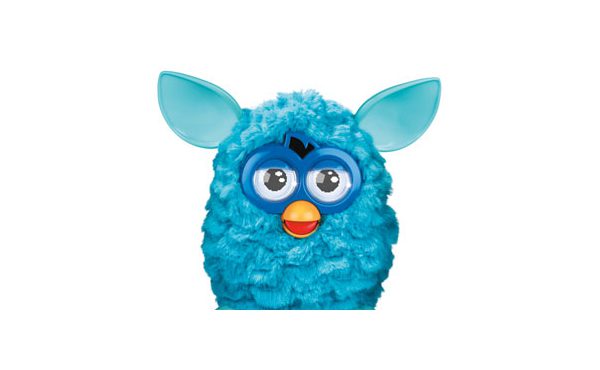the interactive toy, which had revolutionary technology when it debuted globally in 1998 and sold 40 million pieces worldwide, will return to stores in september 2012 with even more features than before.
released in australia in 1999, furby was an animatronic pet which spoke its own language and could learn to speak the language of the country it was bought in.
the new furby comes with led eyes instead of plastic which can show expressions such as heart images when it is happy, has a motion sensor, personality development and in moving with the times, app compatibility.
“probably the biggest differential would be the use of apps,” says roz fisher, hasbro pacific marketing director. “in the old days you could feed furby through his mouth or beak, this furby you can still feed manually through his beak but if you’ve got an itouch, ipad or iphone you can actually download the furby app and it’s got different food and so you can flick the food across to him and see whether he likes the food that you’re offering him or not and that will be part of the personality development that he goes through.”
fisher says retailers are excited about the return of the revolutionary toy and remember the stir it created.
“some of the buyers who are in the trade at the moment remember furby from the time he was around and if they don’t remember him from their career experience they certainly knew of him as a consumer themselves, so they do remember the phenomenon this toy created back in the late 90s and are very excited.”
hasbro felt the time was right for the furry friend to make a comeback because developments in technology have been able to enhance the toy and make it more interactive than before.
“furby was first out in the… [late 90s] at the time he was sort of a revolutionary toy. it was funny because he was banned from the pentagon and airplanes because people thought he did all these magical things that he didn’t do. they thought he could record voices and talk and would learn and would do all of these things, so back [then] his technology was a bit ahead of its time. actually, if you go on a qantas airline today there is still a no electronics toy sign that has the image of the silhouette of furby with the cross through it,” fisher explains.
“i think now technology has obviously developed so much further since then. it’s the time when they’ve been able to make him better using current technology where they feel it’s going to meet people’s expectations, because he was such an iconic toy and was seen to be so ahead of his time he had to have that again.”
while it’s unknown whether furby will have the same impact it had when it was first released – 235,000 sold in australia in 1999 – it’s likely the name will bring back such fond memories that it will strike a chord with consumers.
“i’ve been presenting furby at different trade fairs and if you ask people do they remember him, if they don’t remember him from their buying career as a retailer they remember having one as a kid or their kid had one. so what we’re really lucky with is that name everybody absolutely understands and immediately knows what it is, so you’ve kind of got that whole awareness thing covered already and now we just need to tell everybody about the big differential between what furby is today versus what he was in the past,” she adds.







